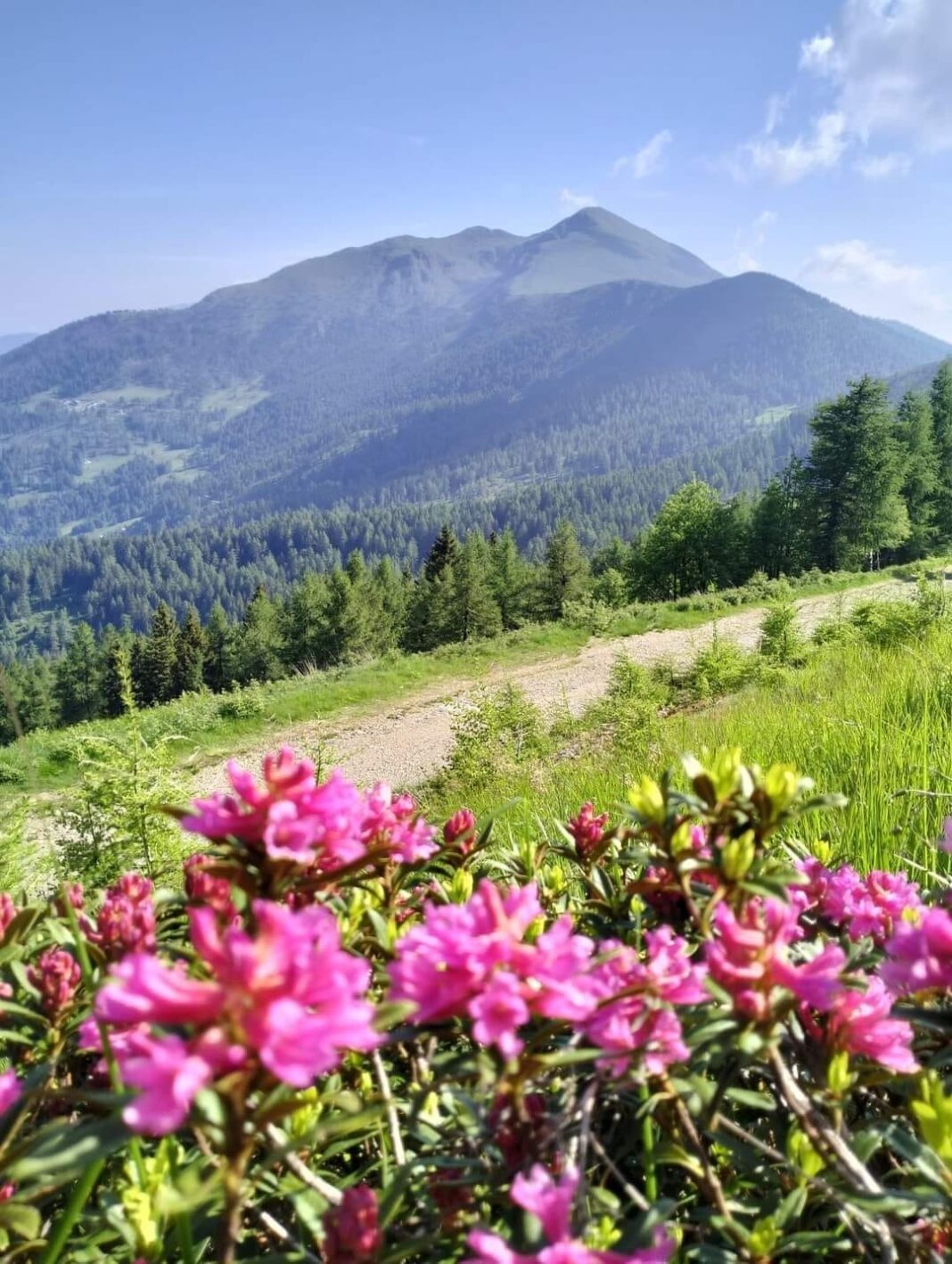Valle dei Mòcheni, or Valle del Fèrsina (in Mòcheno Bersntol, in German Fersental), is an Italian valley in the province of Trentino crossed by the Fersina torrent, from its source to the town of Pergine Valsugana. The area is known for a German-speaking linguistic island of medieval origin, that of the Mocheni.
Orography
The valley is surrounded by the peaks of the western sector of the Lagorai group and is rich in pastures and woods, especially larches and spruces.
The central mountains (with corresponding Mocheno name) that surround the valley are:
Mount Ruioch (Rohjoch) – 2,432 m
Sasso Rotto (Inderschrumm) – 2,398 m
Cima Sette Selle (Schrummspitze) – 2,394 m
Mount Gronlait (Groa’ Lait) – 2,383 m
Mount Fravort (Hoabort) – 2,347 m
Monte Conca (Kunko) – 2,301 m
Pizzo Alto (Hoaspitz) – 2,264 m
Cima Cagnon (Satteljoch, Zatelen Joch) – 2,235 m
Cima Pontara Alta (Lemperpèrg) – 2,008 m
Dosso di Costalta (Costàlta) – 1,955 m (which divides the valley from the Piné plateau)
Common
The Mocheni valley involves the municipalities of Fierozzo (Vlarotz), Frassilongo (Garait), Palù del Fersina (Palai en Bersntol) and Sant’Orsola Terme (the largest and most populous Italian-speaking town, like the whole southern part of the western side of the valley); it also affects part of the municipalities of Vignola-Falesina (particularly the hamlet of Falesina) and Pergine Valsugana (hamlet of Canezza).
Its economy is essentially agricultural: cultivating small fruits (strawberries, raspberries, blackberries, blueberries, etc.) is renowned, mainly developed in the last twenty years. Furthermore, the treccia machine is produced there, a typical dessert of the valley, despite some doubts about its authenticity.
History
The lower part of the valley with Sant’Orsola Terme
Before the Middle Ages, the valley was exploited only in the summer months for grazing; the first stable settlements date back to the mid-13th century in the lower part of the valley, affecting the area of Frassilongo and its hamlets.
At the beginning of the 14th century, the settlements also moved to the higher and less accessible part of the area; thus, the first farmsteads with permanent inhabitants were founded in the municipalities of Fierozzo and Palù del Fersina. The first inhabitants, known as “Mondadori” (from the term billhook with which the land is made workable), were farmers of predominantly Germanic origin and settled on the Fierozzo mountain.
In the Middle Ages, the valley depended mainly on the Castle of Pergine. At the same time, the mountain of Fierozzo was the property of the Principality Bishop of Trento, granted in perpetual lease to the community of Povo. Over time, the hill passed under the influence of the Counts of Tyrol, and the area was increasingly Germanised and divided between the jurisdiction of the castellans of Pergine (who in 1400 owned 32 farmhouses in Fierozzo) and that of the families of Corrado de Frauenberg, the Greifenstein and the Starkenbergs.
To these is added a second wave of arrivals from Germanic areas of workers in the local mines (the “canopies”) in the 15th and 16th centuries. The mining activity enriches the valley’s economic life and favours the population’s increase. The extraction of copper, silver, lead, and quartz will continue for centuries, ending with the extraction of fluorite until the seventies of the twentieth century, when the activity ends.
Agricultural and mining activities and the evolution of the Mocheno language from German constitute the main factors characterizing the valley’s culture.
Starting from the 18th century, instead, the typical commercial activity of the valley is that of the “Krumer” (Italian form: “cròmeri”), peasants who, during the winter months, transform themselves into street vendors. Traditionally they sell religious images under glass, a material they procure in Southern Bohemia, Austria and Bavaria and trade by moving to various geographical areas to the north and east, arriving in some eras as far as the border of the Ottoman Empire. Subsequently, the objects of trade mainly became fabrics for clothes and small parts for sewing and embroidering; the activity decreased around the sixties of the twentieth century.
During the First World War, the valley was touched by military operations (the writer Robert Musil fought there as a lieutenant in the Austro-Hungarian army, an experience he will recall in his diaries and some stories and poems).
In particular, the novella with the Italian title Grigia is set in what the writer was the first to define as an “enchanted valley”. In 1942 several Mòchena-speaking inhabitants chose to move, according to the provisions of the agreement signed in 1939 by Hitler and Mussolini relating to the ” option” (the choice of a homogeneous homeland concerning one’s ethnocultural belonging) in farms of the Protectorate of Bohemia and Moravia, occupied by the Nazis. Most of them returned to the valley after the end of the Second World War.



